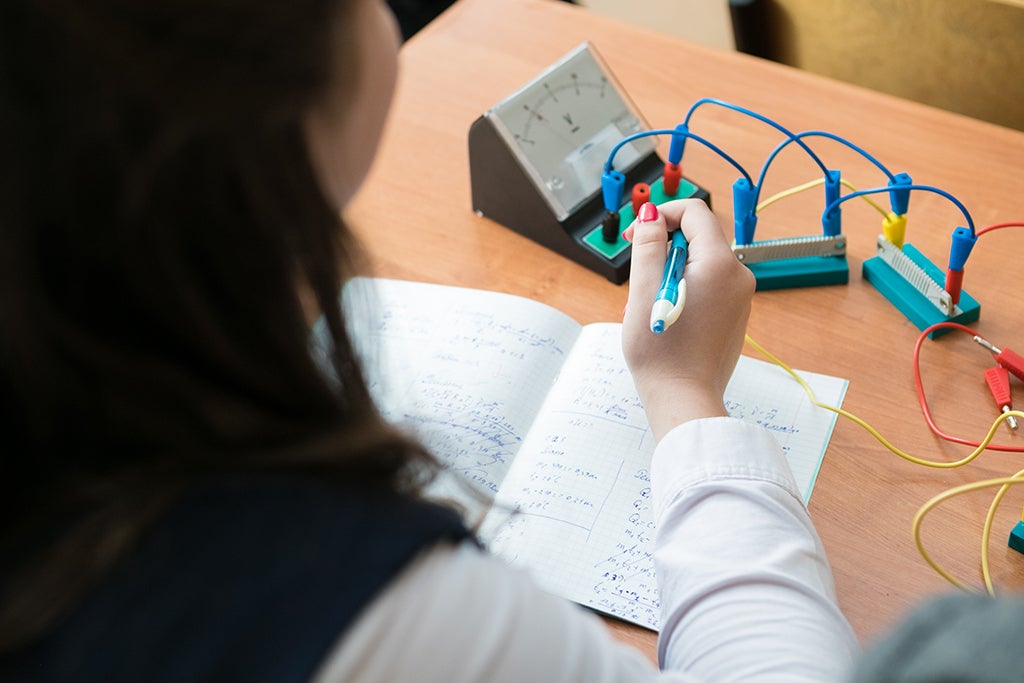Physics II
Electromagnetism, Optics, and Nuclear Physics
3 College Credits | UT Course Code: PHY 302L | TCCN Course: PHYS 1302 | Core Code: 030
High School Course Prerequisites: TEKS-based Physics, Algebra II and Geometry required; Physics I (OnRamps/Honors/AP/DC) or Precalculus recommended

Build a toolbox for thinking about physics, including mathematical approaches and pictorial representations.
This algebra-based course — the second in a sequence that fulfills a general physics requirement — introduces major ideas in electricity, magnetism, optics, waves, and quantum and nuclear physics.
Students gain practical experience with electrical circuits and optical devices and investigate modern physical phenomena, including the quantum nature of light (photons) and properties of the atomic nucleus.
Course Structure
This course, designed with a Peer Instruction pedagogy, prepares students for calculus-based physics and other STEM courses and careers. Students develop foundational skills, critical thinking, empirical and quantitative skills.
Big Ideas
- Electricity
- Magnetism
- Electromagnetism and optics
- Photons, quantum physics, atomic models, nuclear physics
What Students Gain
- Insight into fundamental properties of the universe and how they are applied
- Knowledge and skills required for future calculus-based physics courses
- College-level scientific reasoning, data collection and analytical skills

What Students Say
“OnRamps offers a comprehensive college course like no other. The content taught in these classes is highly applicable towards real life. OnRamps gives students an actual sense of college-level work.”
